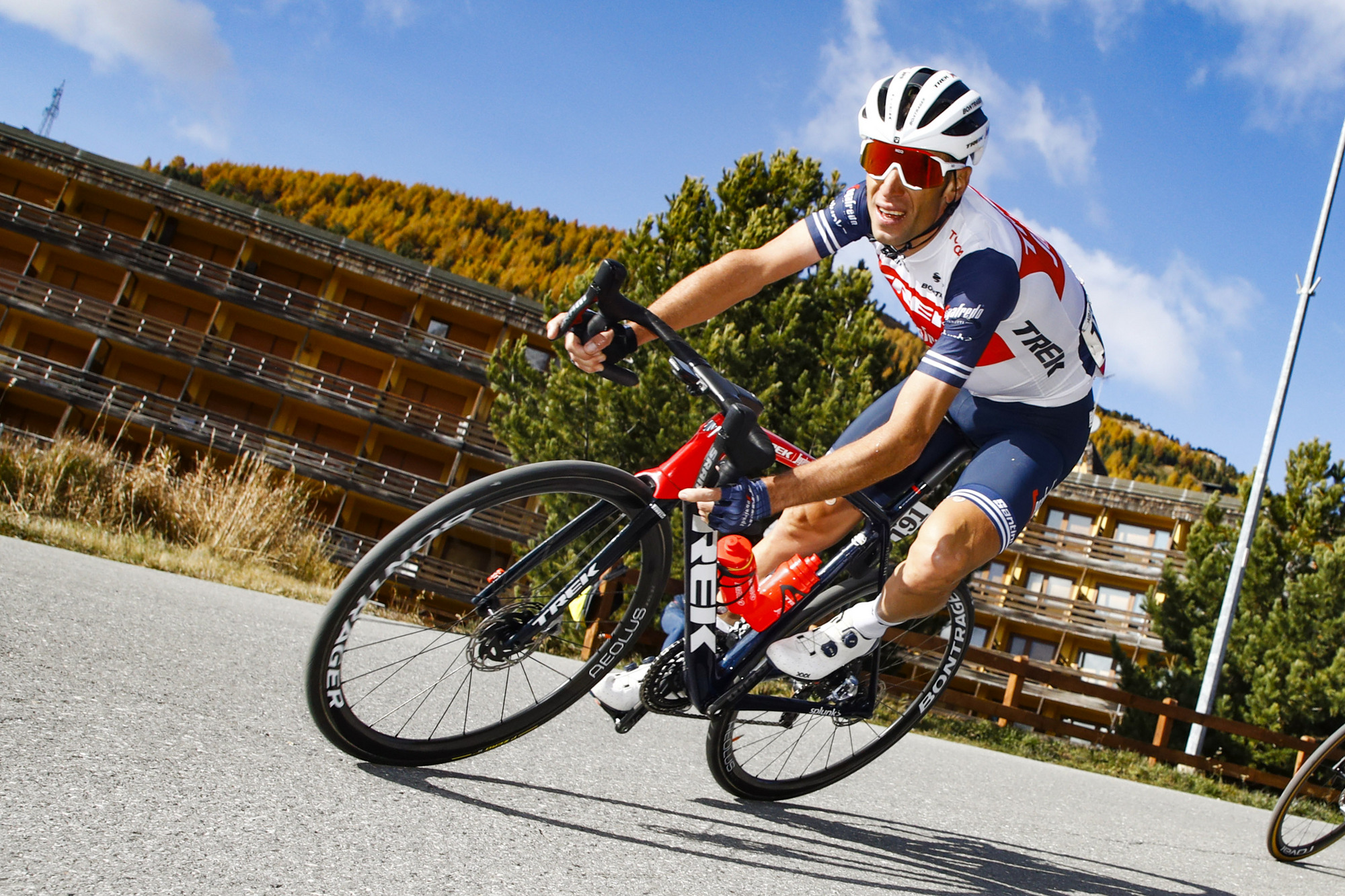Vincenzo Nibali: I can't make any big proclamations ahead of the Giro d'Italia
Italian uncertain of condition three weeks after breaking wrist in training crash

A great deal of the Giro d’Italia’s appeal may lie in its ability to throw up the unexpected, but the host broadcaster has always been glad of a familiar face around whom to build its narrative. In the 1970s, that figure was Felice Gimondi, as the late Adriano De Zan, RAI television’s man in the booth for over four decades, once pointed out. “A television commentator has an obligation to offer viewers a safe product... With Gimondi, I could be certain,” De Zan said.
Vincenzo Nibali’s palmarès, consistency and standing make him an obvious heir to Gimondi, and one can only assume that RAI executives breathed a sigh of relief this week on learning that the Trek-Segafredo rider had confirmed his Giro participation despite breaking his right wrist in a training crash near his Lugano home in mid-April.
Last Autumn, after all, the state broadcaster built its slightly maudlin advertising campaign for the rescheduled 2020 Giro around Nibali, depicting him riding alongside vaguely petrifying digital renderings of past champions to the strains of Puccini. Come the Giro itself, however, he had to settle for a distant 7th place in a general classification populated by the coming men of cycling’s future.
Nibali turned 36 a few weeks after that Giro, but he quickly vowed to return in 2021, even if he was coy about his precise objectives during the off-season, stating simply that he wished to race with greater freedom than in years past. Speaking to reporters in a video conference on Thursday, he acknowledged that his targets for this Giro are even more nebulous now, given that he has spent the past three weeks straining simply to get here at all.
“I can’t make any big proclamations, even in my own head,” Nibali admitted. “I can’t really say how my condition is, but it’s important for me to be here. It was a tough period. I was off the bike for 10 days. After coming back from training at Mount Teide, I had a couple of recovery days planned ahead of the Tour of the Alps, but then there was the crash, which messed everything up. I gradually got back on the bike but I was only sure I’d ride the Giro after the check-up on Monday showed that the fracture is healing.”
Nibali underwent surgery in Switzerland on April 15 and he resumed training on the road a little over a week later using a specially fitted carbon brace on his wrist. He has since dispensed with the rigid support, and the only concessions to his injury on the Giro will be an additional layer of handlebar tape, a mite less pressure in his tyres and – perhaps – a light bandage.
“I don’t feel pain now, but it can depend a lot on the weather. Some days there’s no pain and others, I can feel it. But it’s been three weeks since the crash and the wrist feels good, and it’s getting better day by day,” said Nibali. “The first week of the race will be a test, then we’ll take stock. I’ll have more assessments and, together with the team’s medical staff, we’ll evaluate what to do.”
The latest race content, interviews, features, reviews and expert buying guides, direct to your inbox!
Nibali is flanked in the Trek-Segafredo line-up by two other leaders, though Bauke Mollema explained on Thursday that he is at the corsa rosa with an eye to stage victories rather than the general classification, while Giulio Ciccone has not raced since he abandoned the Volta a Catalunya with a knee injury. “During the first week, I’ll understand how I am. There are two uphill finishes that might tell us who can go for GC and who is already out of it,” Ciccone said. “I’ll hang in there and try not to lose time in the first week. Then based on how Vincenzo is, we’ll see how to approach things.”
Before last year’s Giro, Nibali had finished on the podium in his previous six appearances, and his muted 7th spot in Milan still left him as the best-placed Italian on general classification. Despite his truncated build-up, and despite the promise of riders like Ciccone, Fausto Masnada and Filippo Ganna, Nibali is, in the here and now, the home nation’s most likely prospect of a high overall finish once again in 2021.
Given the circumstances, it seems fanciful to imagine that Nibali could emulate Gimondi’s 1976 performance and add a third Giro title in his mid-thirties. But the Sicilian is here, against the odds, and still fighting to keep the flame alive. The outcome is uncertain, but there is no safer product.

Barry Ryan was Head of Features at Cyclingnews. He has covered professional cycling since 2010, reporting from the Tour de France, Giro d’Italia and events from Argentina to Japan. His writing has appeared in The Independent, Procycling and Cycling Plus. He is the author of The Ascent: Sean Kelly, Stephen Roche and the Rise of Irish Cycling’s Golden Generation, published by Gill Books.